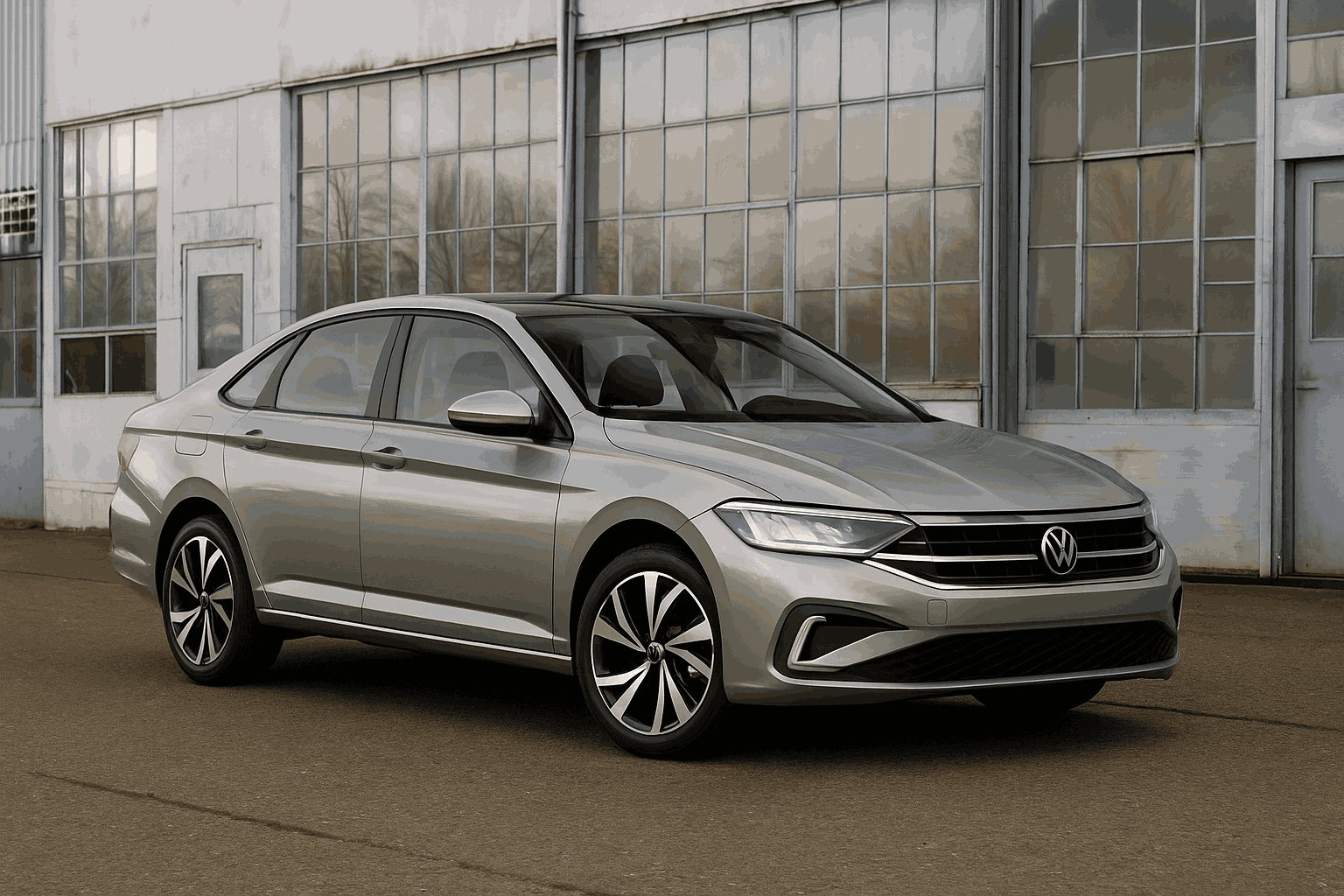
MSRP: $23,775
8.2 /10
Rating
Pros
- Impressive safety tech suite
- Well-insulated, quiet cabin
- Refined ride on highways
Cons
- GLI models get expensive
- No AWD drivetrain option
- Backseat tight for three
2025 Volkswagen Jetta 1.5T Sport Review by Vyocar
A budget-friendly sedan with comfort, tech, and subtle performance charm.
Overview
There’s something compelling about a budget-friendly, sporty four-door sedan that doesn’t try too hard but still nails the basics—and this one does just that. It might not scream for attention like a flashy hatchback, but its Pyrite Silver Metallic exterior, stylish stance, and subtle Teutonic charm quietly whisper, “Hey, I’ve got my life together.” The inline-four 158-hp turbocharged engine delivers enough pep to make daily commutes feel like a low-key joyride, and whether you go with the six-speed manual or automatic transmission, the handling stays nicely dialed-in—mature, yet not boring.
Inside, it’s surprisingly spacious for a compact, with dual-zone climate control, leather-wrapped steering wheel, and enough technology to keep even the most screen-happy driver somewhat smitten. For folks who want something practical, upscale, and still affordable, this vehicle makes a strong case against rivals like the Hyundai Elantra or even cross-brand options like the Tiguan and Atlas if you’re considering a step up in size. Sure, the trim levels remain mostly unchanged, but features like rain-sensing wipers, collision warning, and Autonomous Emergency Braking keep it current in the safety segment.
And if you’re looking for more impressions, our vw Jetta dives deeper into how it stacks up against the competition. From my test, it feels like the kind of car that balances economy, control, and a touch of that Volkswagen heritage, offering a smooth ride for the family or your solo drives through the stateside suburbs.
What’s New for 2025
So, what’s actually new this year? At first glance, you might think the updates are mild, but once you test it, you’ll notice some welcome tweaks — kind of like finally organizing your desk and realizing how good it feels. The Monterey Blue Pearl and Monument Gray colors add fresh energy to the exterior, while a revised grille-spanning lightbar, sleeker headlamp units, and smoother fascia give it a more refined face — like the car just came back from a skincare retreat. Inside, the vibe is classier too: premium materials, a polished panel, and just enough dash glow-up to make you wonder why all trims aren’t this tidy by default. The 8-inch touch screen is now standard, with Apple CarPlay and Android Auto (yes, even wireless) letting your phone feel like it finally belongs. And if you’re wondering about those wheels, the Sport and SEL models now ride on 17-inch or 18-inches, ready to roll through suburbia like they’ve got errands and style. The little bobs, wider trunk lid, smarter climate vents, and improved charging spots round it all out. It’s still got the manual if you’re old-school (respect), but let’s be honest — the automatic is what most of us lazy drivers will pick anyway.
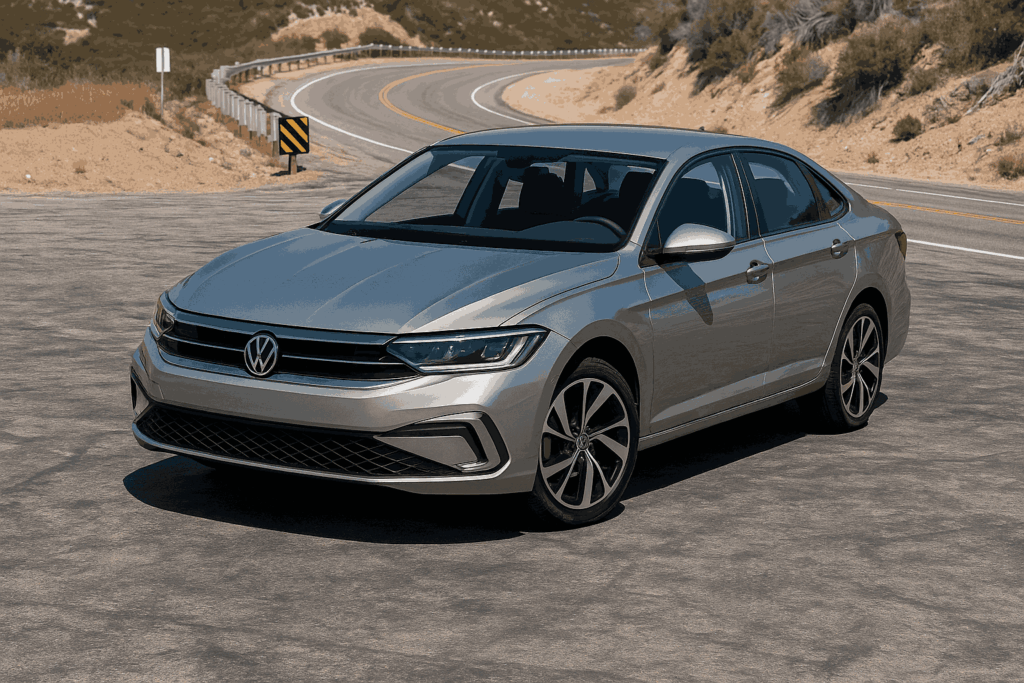
Pricing, Trim Levels, and Best Pick
If you’re hunting for that sweet spot between price and features, this lineup makes it feel less like a chore and more like a smart adult move—spoken from a 29-year-old who’s done the whole “compare-every-compact-sedan-at-2AM” thing.
The base S trim kicks off at around $21,000, and even that comes surprisingly well-equipped with solid audio, remote start, and wireless tech support. But the real best pick here is the Sport, which brings in a sportier vibe with 17-inch alloy wheels, pattern-embossed cloth seats, a black mirror cap finish, and enough premium touches to make it feel like a step up without stepping over budget. If you’re more into heated seating, sunroof, or navigation, then the SE and SEL will tempt you, but you’ll be factored into a pricier range—especially when that $1,225 destination fee kicks in.
The GLI Autobahn and GLI 40th Edition bring real adrenaline-seeking energy with a limited-slip differential, XDS, and tuned-up suspension, but now we’re costing past $33,940. Personally, I found the Sport nails the balance—it feels striking without trying too hard, gives you charging, folding rear seats (thanks, 60/40), and even a stainless-steel pedal vibe that kinda says, “Yeah, I lift.” It’s a bargain in a market full of alternatives like the Mazda3, Civic, or even Golf R, and unless you’re deep into molekular anti-roll bar talk, you’ll find yourself at the right point—right trim, right price, right car.
Powertrain, Transmission, and Driving Dynamics
You know a powertrain is doing something right when your test drive through the streets feels smoother than your last work Zoom call. The 1.5-liter turbocharged four-cylinder under the hood pulls confidently with 158 horses and 184 pound-feet of torque, giving it just enough hustle to feel entertaining on a city run or a quick climb up Angeles Crest Highway. The eight-speed automatic transmission handles shifts cleanly, and if you’re in the mood, Normal mode keeps things chill while Sport mode sharpens the throttle response and firms up the steering. I noticed the chassis stays planted in corners, with little understeer, even when I pushed it a bit harder than I should’ve on a long highway stretch—purely for research, of course. While it’s not pretending to be its more aggressive GLI sibling, the tuning here feels just right for a comfortable, dynamic, and slightly athletic vibe. Even the suspension feels updated, absorbing bumps while still offering a precise feel through the gear and steering inputs. It may not outrun a Honda Civic Si or corner like a Mazda, but for a base trim with a German badge, the ride quality is quietly impressive—like it’s got legs for both weekday commutes and weekend mountain drives without needing a second mortgage.
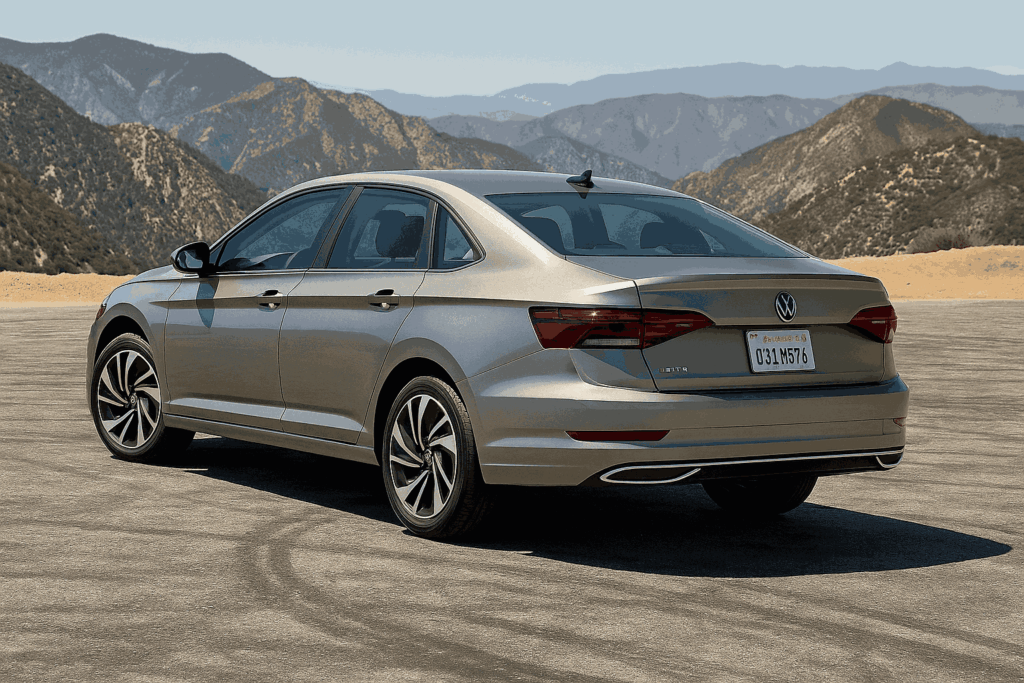
Fuel Economy & Real-World Driving
We ran a full test across urban streets, highways, and some uphill routes just outside Pasadena, and the results were refreshingly grounded. In heavier city traffic, especially during warmer afternoons with the AC running, the car averaged around 30.5 miles per gallon—not groundbreaking, but certainly respectable for a non-hybrid setup. On longer highway runs, cruising at steady speeds, we saw a peak of about 37.2 mpg, which shows this engine knows how to settle in and save fuel when given room to breathe. For mixed suburban loops with elevation changes and normal throttle behavior, the average landed around 32.7 mpg. While it’s not rewriting the rules of efficiency, the powertrain delivered consistently without struggling in heat or during hill climbs. The suspension felt well-tuned for daily driving, and brake fade was never an issue, even after some spirited miles. Overall, it’s the kind of performance that doesn’t just look good on paper—it holds up when you’re actually behind the wheel, filling up less often, and still getting where you need to go without compromise.
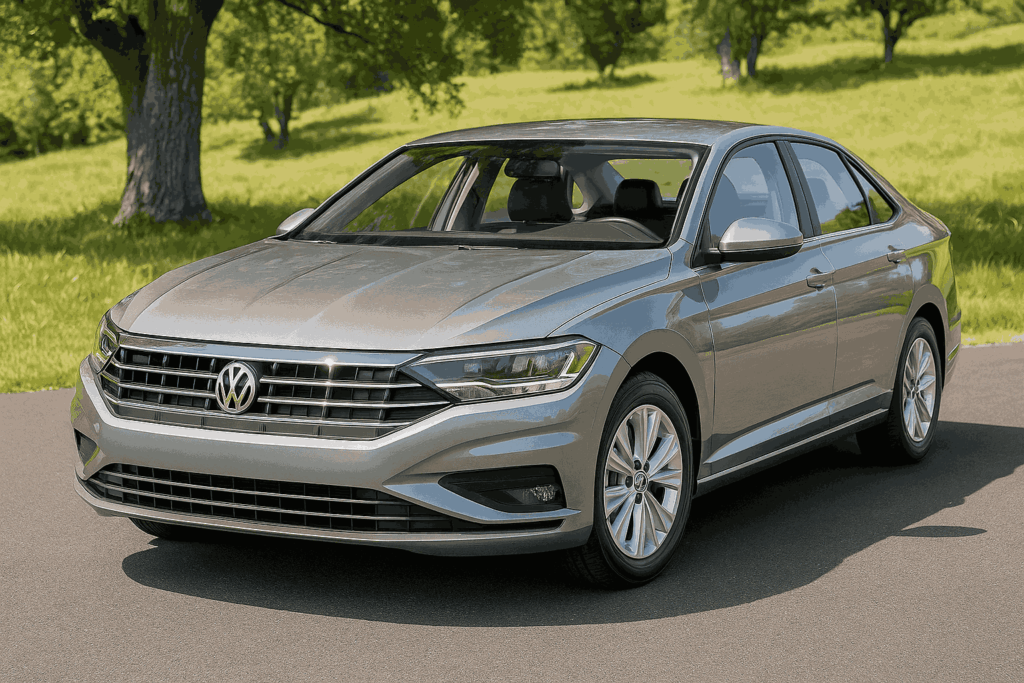
Interior and Comfort
We took the 2025 sedan on a long test trip that included everything from a morning commute, a weekend freeway run, and even some rougher road patches just to check how the ride quality holds up—and overall, it felt quiet, roomy, and more upscale than expected for the segment. The cabin has a clean, restyled dashboard with smartly placed touchpoints and controls that are easy to enter. The menus are simple, the steering is light but precise, and the ergonomic layout means all the information is where it should be—visible at a glance, with no need to twist around or hide behind confusing buttons.
Once seated in the front or rear, even tall passengers will appreciate the generous cubic-foot space and the comfort of firm yet cushier seats, especially with heated options on the SEL trim. The leather-wrapped elements add a bit of sophistication, and the acoustic headliner and glass keep noise levels low even when those 16-inches tires roll over bumps or rough sidewalls. The wide windows and upright driving position give a great visual of the road, making lane changes and city traffic feel far easier than they should.
Compared to rivals like the Lexus UX 300h or even its larger Arteon sibling, this car may not have all the spoils, but it holds its own with solid economy, good acceleration, and a well-shaped trunk that doesn’t waste space. There is a minor downside—the back seat can get a little snug for a fifth passenger, but the support is still decent for shorter rides. All told, it’s a sophisticated, breezy interior that manages to look sharp, feel refined, and still be a place you’d actually enjoy spending time in—whether you’re the fourth, fifth, or lucky enough to ride up front.
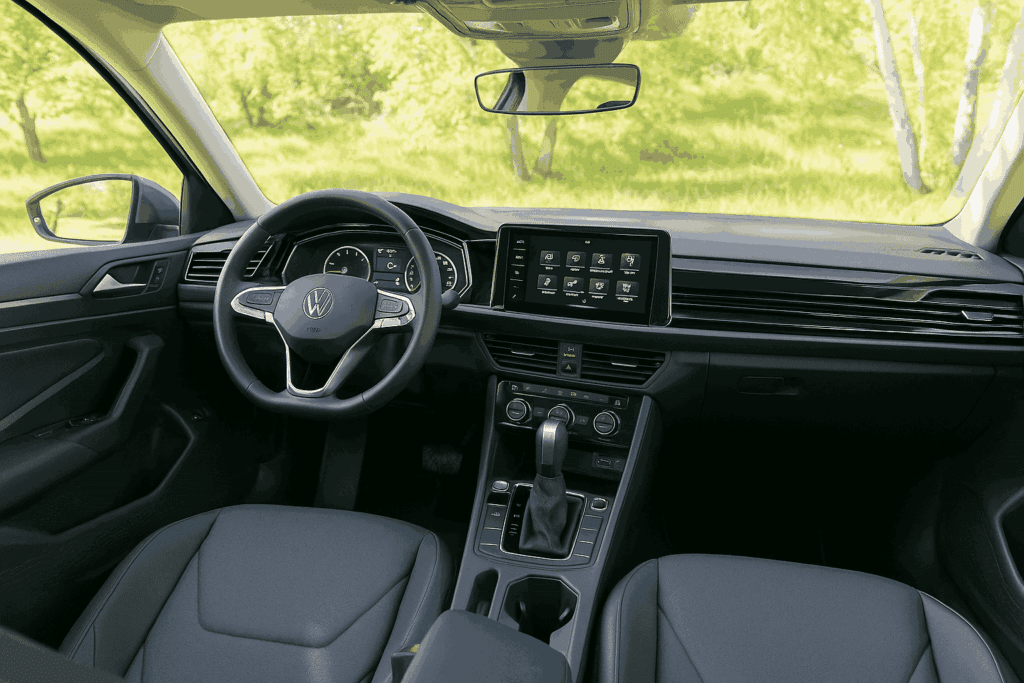
Cargo & Practicality
If you’re the kind of person who treats every Costco run like a mini road trip, you’ll be glad to know the trunk is actually roomy enough to haul all your bulk buys without needing to contort your back or rearrange your passengers. With 14.1 cubic feet of space, the opening is wide, the floor sits at a good height, and the load area is deep enough to swallow up a few full-size bags, a tray of snacks, and even that mystery box of paper towels you didn’t plan to buy.
Inside, the rear seats can be folded to expand storage, and there are solid anchors, tethers, and even bins to keep your objects from rolling around mid-drive. The console and center tray up front have plenty of pocket space for adults to toss phones, snacks, or a wireless charging pad, and the cupholders are placed well—no awkward twist just to grab your drink.
Compared to something like a Camry or even the Atlas Cross Sport, this midsize car offers a clearly marked, well-thought-out cargo area that feels generously designed. No annoying rattle, no tight squeeze—just an easy, practical setup that gets the job done without needing a diagram.

Tech & Connectivity
For a car in this lineup, the tech package is surprisingly tight—everything from the 8-inch touchscreen to the digital climate controls feels modern and easy to use. You get Apple CarPlay, Android Auto, and even wireless connectivity on upper trims like the SEL, but thankfully, USB-C and USB ports are also standard for folks who still like a good wired backup.
The touchscreen menus are simple, and switching between native functions and smartphone apps takes just a second—no head-scratching. During our freeway run, the IQ.Drive system worked well with adaptive cruise assist, and we appreciated the clarity of the backup camera, even if it’s not the highest-res panel in the segment.
The 10.25-inch display on the driver side is crisp, the stereo (especially the optional Beats-branded one) hits hard with bass-heavy tracks, and the car-net app setup is intuitive enough to connect devices without needing a full tutorial. You’ll also find a charging pad, Wi-Fi hotspot, and Bluetooth that all sync up without fuss.
Overall, the system offers all the features most people use daily—nothing flashy, but everything works adequately, and that’s more than we can say for some pricier rivals like the Honda Odyssey or even the ID.4 Pro S.
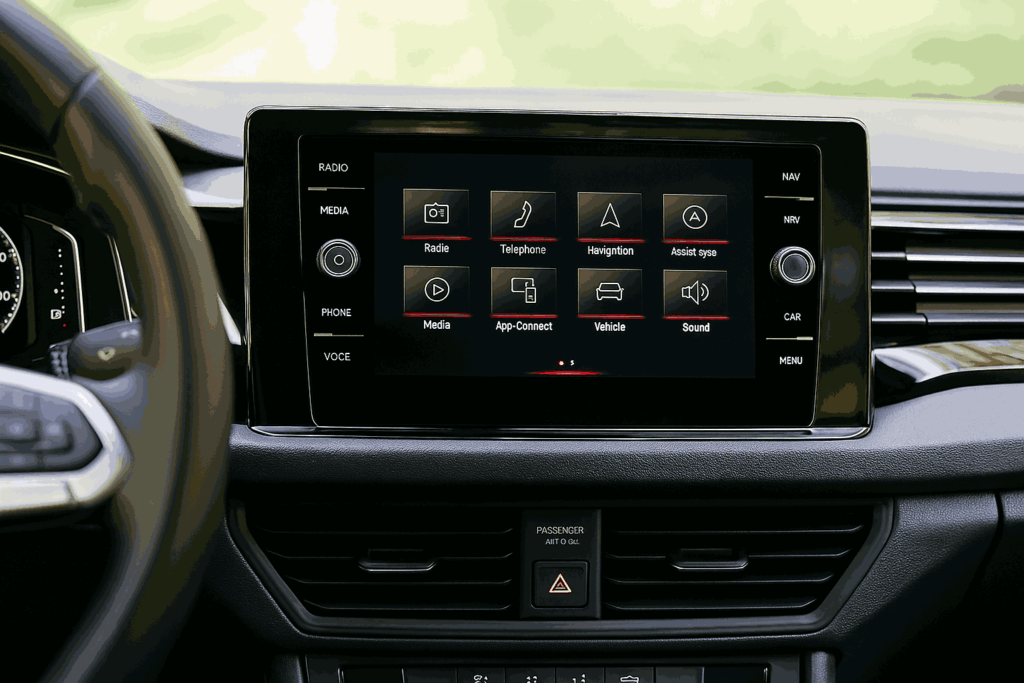
Safety and Driver Assistance Tech
The 2025 model comes stacked with a surprisingly refined and responsive suite of driver assistance features, thanks to Volkswagen’s IQ Drive system. From adaptive cruise control to lane-centering and lane-keeping assist, it handles common driving situations with ease—almost like having a co-pilot who doesn’t talk too much. During our test, the forward-collision warning, automatic emergency braking, and rear cross-traffic alerts kicked in exactly when needed, with flawless timing and no overreactions.
The blind-spot warning was especially helpful while merged into busy lanes, and Travel Assist made long drives feel a little less draining. Safety tech like seatbelt pretensioners, load limiters, and emergency stop assist are all part of the standard collection, making this car feel well-prepared for real-world performance.
Even in rolling traffic, the ADAS system adjusted smoothly, and the Active lane assist didn’t nag unnecessarily—just gentle nudges when needed. For a car in this class, the assembly of these advanced systems feels expanded, smart, and adept at handling the kind of unpredictable moments that pop up when you least expect them.
Warranty and Maintenance Plan
When it comes to warranty and maintenance, this one strikes a decent balance—not exactly groundbreaking, but far from below-average. Volkswagen provides a 4 years/50,000 miles basic limited warranty, which includes powertrain coverage, and that’s fairly above-average for the segment. On top of that, you get 2 years or 20,000 miles of complimentary scheduled maintenance, which covers the first couple of service visits without needing to pull out your wallet.
There’s also Corrosion coverage for 7 years, just in case your daily grind involves salted roads or beach parking. And if you find yourself stranded during that time, Roadside Assistance is part of the deal, good for 3 years or 36,000 miles, whichever comes first. While some company rivals try to offset limited coverage with flashy extras, this one keeps things simple and useful—enough to take the edge off those early years of ownership without giving you a manual thicker than the Maintenance log.
Final Verdict
I went in with low expectations—half expecting the usual aging compact formula—but I came away pleasantly surprised. This car doesn’t try to be something it’s not, yet somehow ends up being better-looking, better-equipped, and honestly a better-driving option than a few of its Civic and Corolla-sized rivals. The features feel thoughtfully refreshed, the price stays in the sweet spot, and while there are a few nitpicks, nothing big enough to hate or even stress over. For what it’s asking, you’re getting a solid mix of comfort, usability, and just enough charm to make the decision feel smart—whether you’re parked at Trader Joe’s or cruising home thinking about how it kinda gives off subtle Audi vibes. It might not be a Lexus ES 350, and it’s definitely no Land Cruiser, but in terms of daily driving and real-world bargains, it hits closer to that fantastic value than many give it credit for. And if you’re into a good, no-nonsense gas saver that doesn’t feel like a penalty box, this might just be the modern vintage you’ll end up enjoying for years to come.
Jetta S vs SE
Jetta S (Base Trim)
- Engine: 1.5L Turbocharged I4 (158 hp)
- Transmission: 8-Speed Automatic
- Drivetrain: Front-Wheel Drive
- Wheels: 16" Steel with Covers
- Seats: Cloth
- Infotainment: 6.5" Touchscreen
- Safety: Rearview Camera, Basic Safety Suite
- MSRP: ~$21,000
Jetta SE
- Engine: 1.5L Turbocharged I4 (158 hp)
- Transmission: 8-Speed Automatic
- Drivetrain: Front-Wheel Drive
- Wheels: 17" Alloy
- Seats: Leatherette, Heated Front Seats
- Infotainment: 8" Touchscreen + Wireless Charging
- Safety: IQ.Drive with Adaptive Cruise & Lane Assist
- MSRP: ~$25,000
Jetta 1.5T Sport vs GLI:
Jetta 1.5T Sport
- Engine: 1.5L Turbocharged I4 (158 hp)
- Transmission: 8-Speed Automatic
- Drivetrain: Front-Wheel Drive
- Wheels: 17" Alloy (Sport Style)
- Seats: Cloth with Sport Stitching
- Infotainment: 8" Screen + Wireless CarPlay
- Safety: IQ.Drive Suite (lane assist, ACC)
- MSRP: ~$23,500
Jetta GLI
- Engine: 2.0L Turbocharged I4 (228 hp)
- Transmission: 6-Speed Manual / 7-Speed DSG
- Drivetrain: Front-Wheel Drive (with XDS® Diff)
- Wheels: 18" Twin-Spoke Alloy
- Seats: Leather, Ventilated, Red Accents
- Infotainment: 10.25" Digital Cockpit Pro + BeatsAudio
- Safety: IQ.Drive + Performance Brakes
- MSRP: ~$28,500
Which 2025 VW Jetta Trim Is Right for You? Value Ratings Compared
| Trim | Value Rating (1–5) | Best For | Comment |
|---|---|---|---|
| Jetta S | ⭐⭐⭐ | Budget buyers | Basic but well-priced |
| Jetta SE | ⭐⭐⭐⭐ | Comfort seekers | Good mix of features and style |
| Jetta 1.5T Sport | ⭐⭐⭐⭐⭐ | Style + safety on a budget | Best value/performance combo |
| Jetta GLI | ⭐⭐⭐⭐ | Performance lovers | Powerful but pricier |

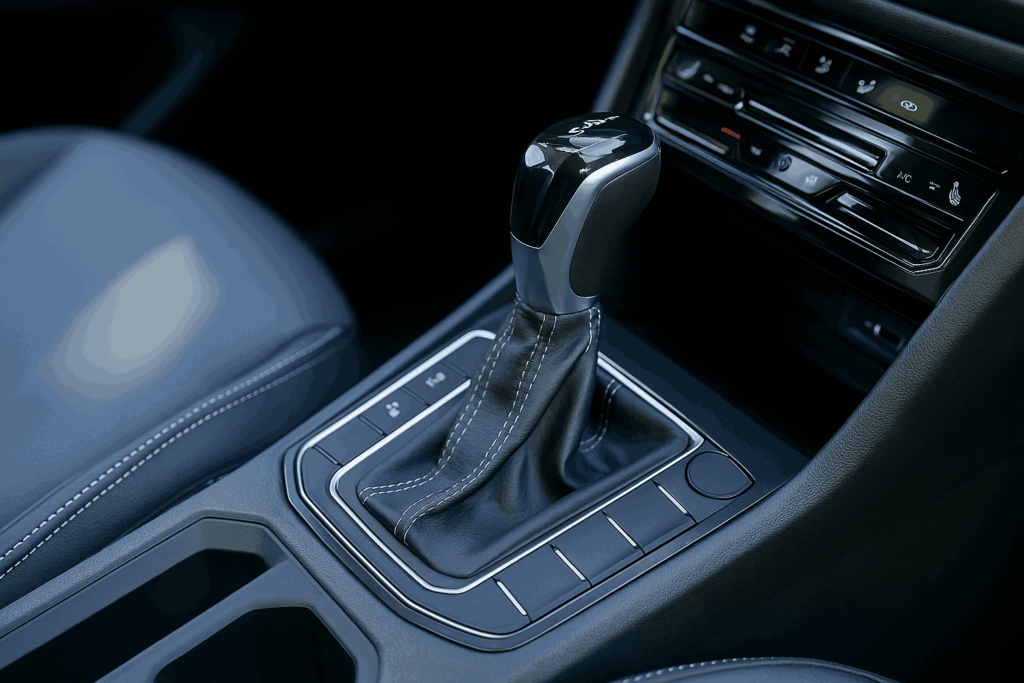
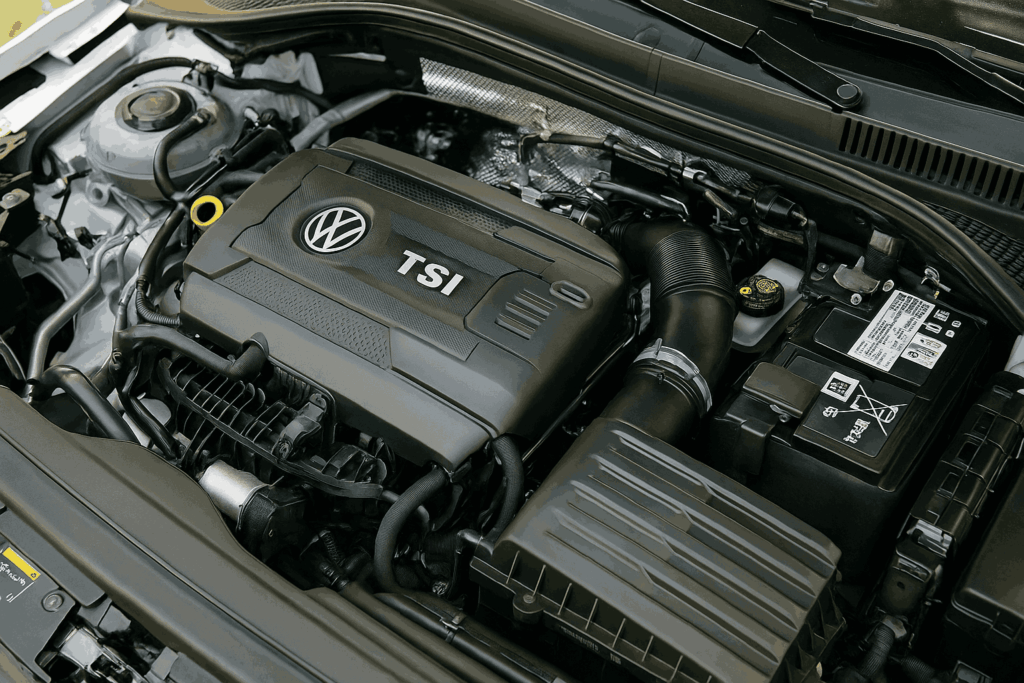


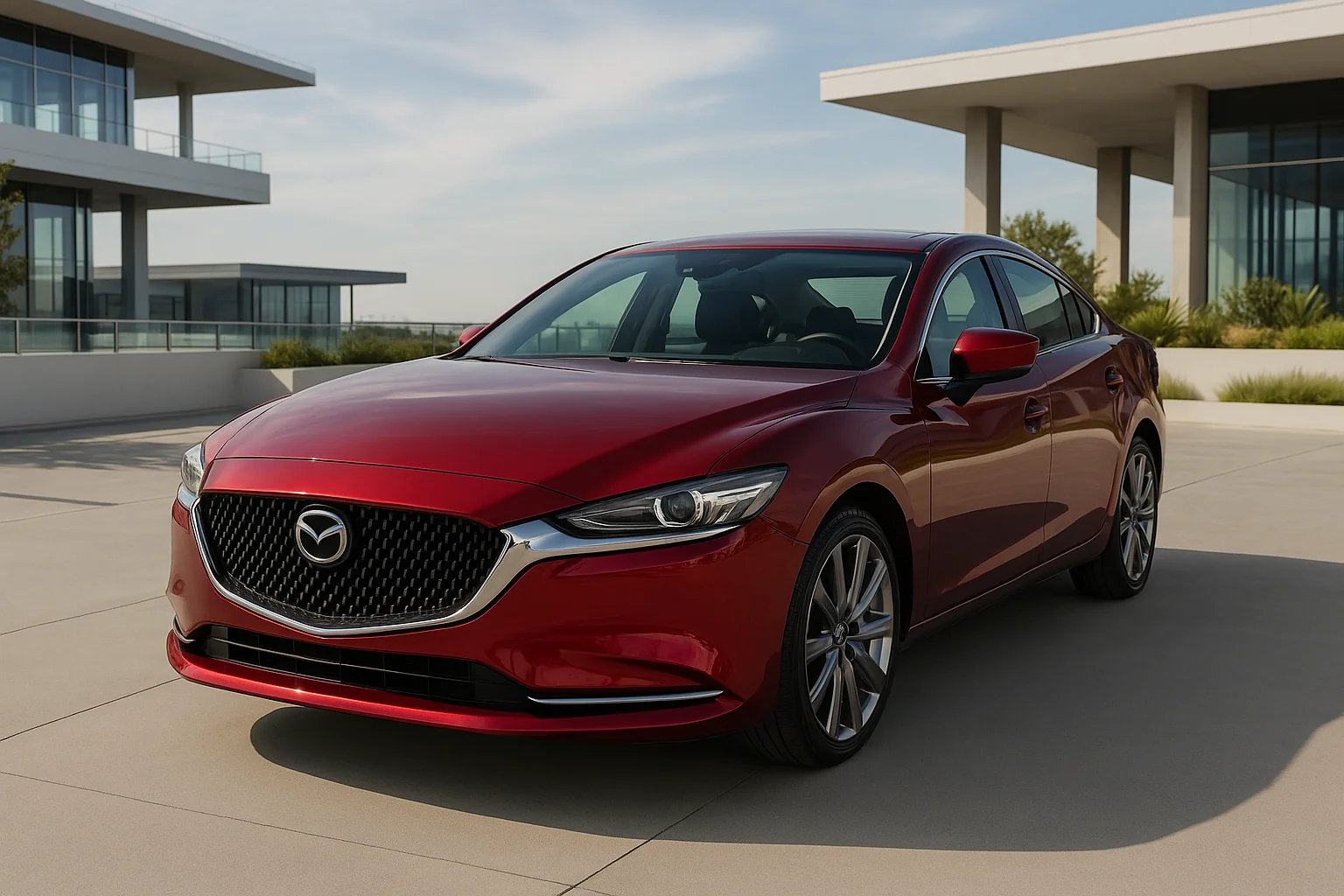
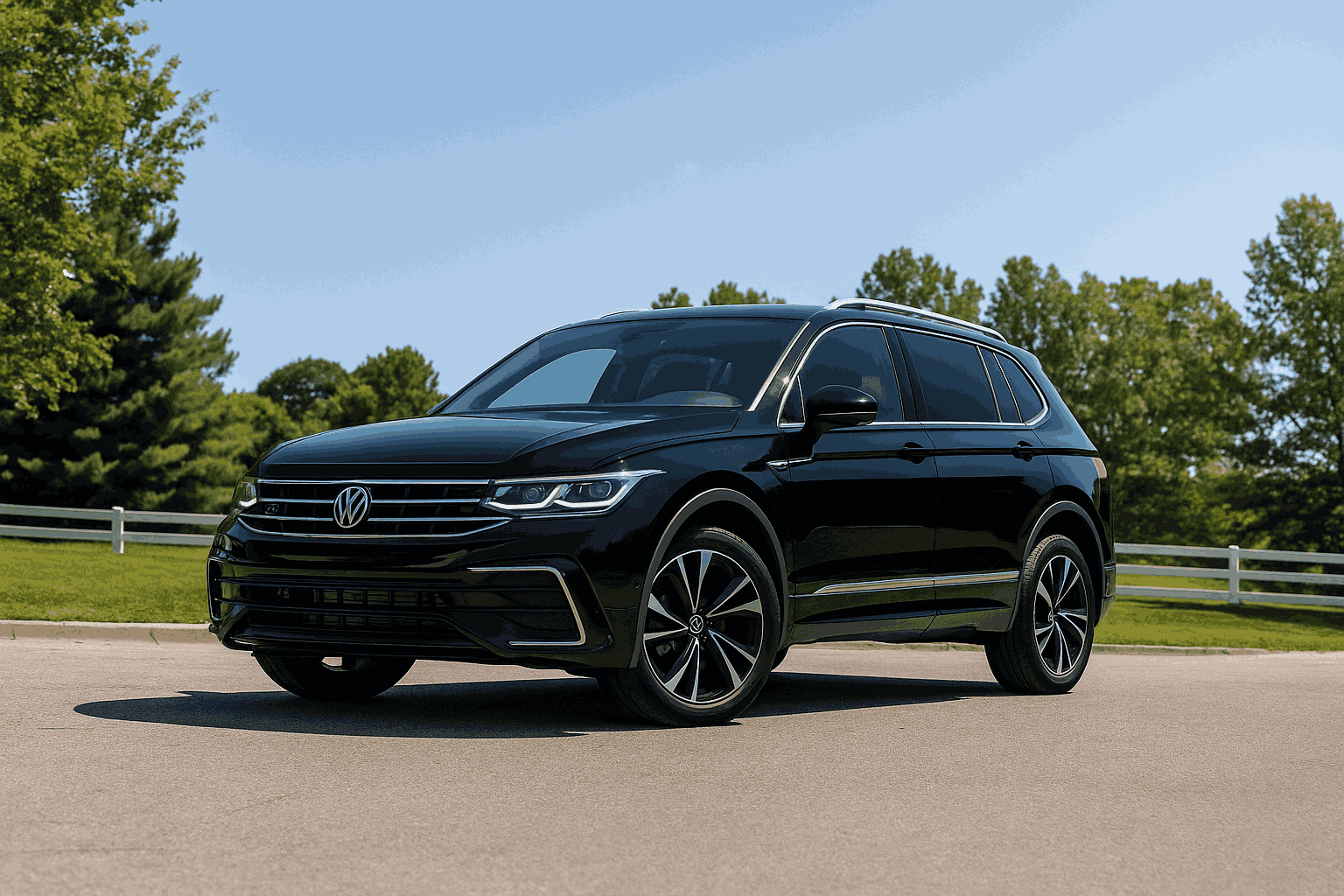
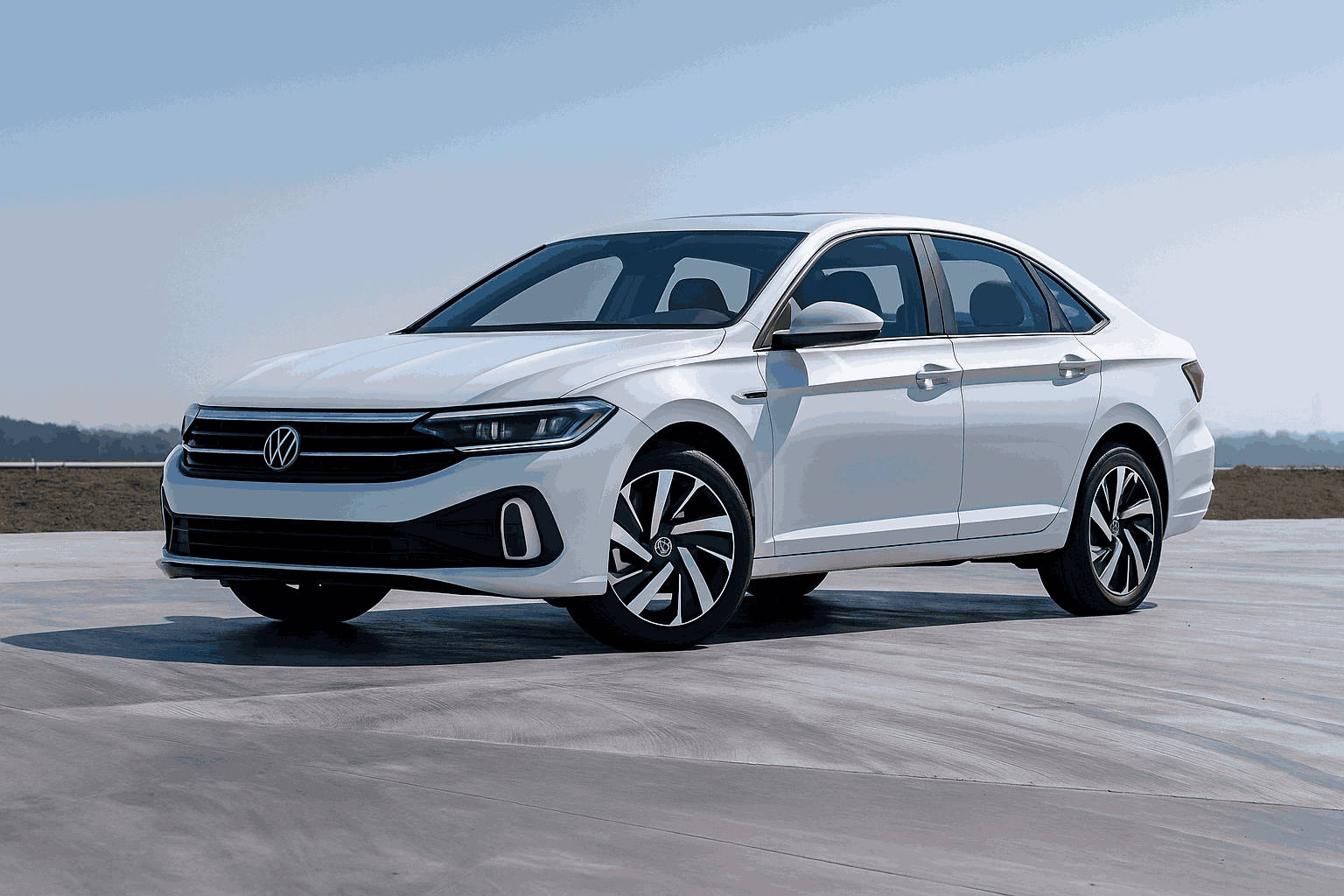
This Post Has One Comment
Pingback: 2021 Mazda 6 Review: Luxury Feel, Sporty Drive